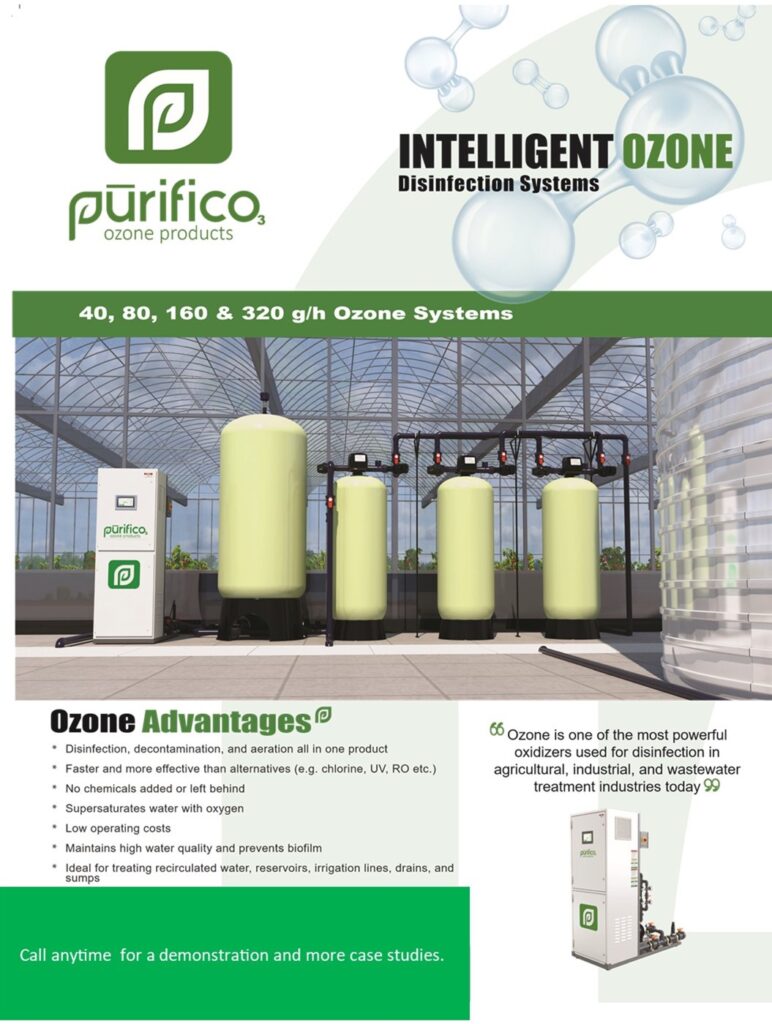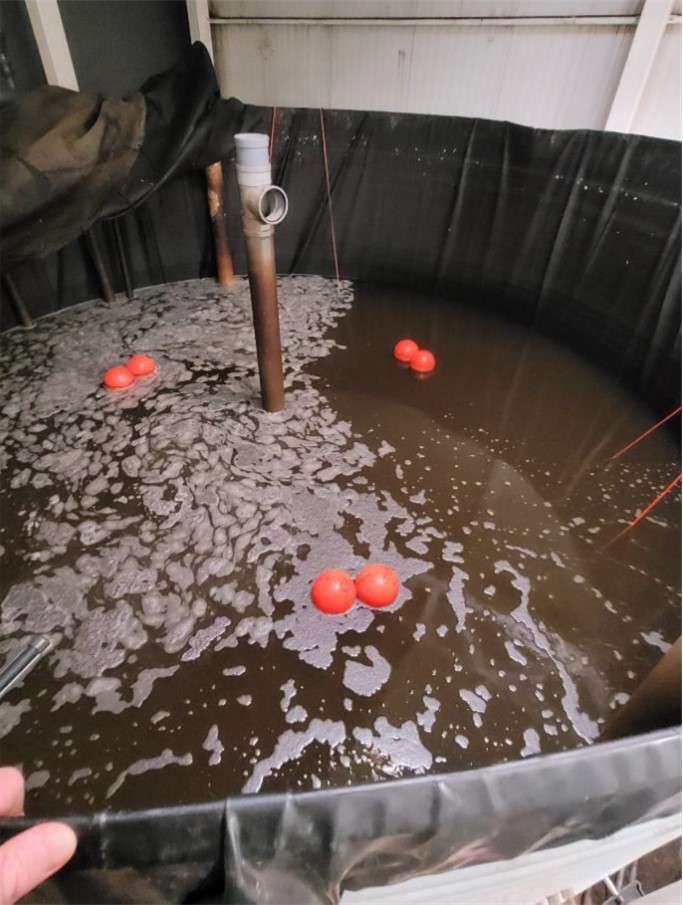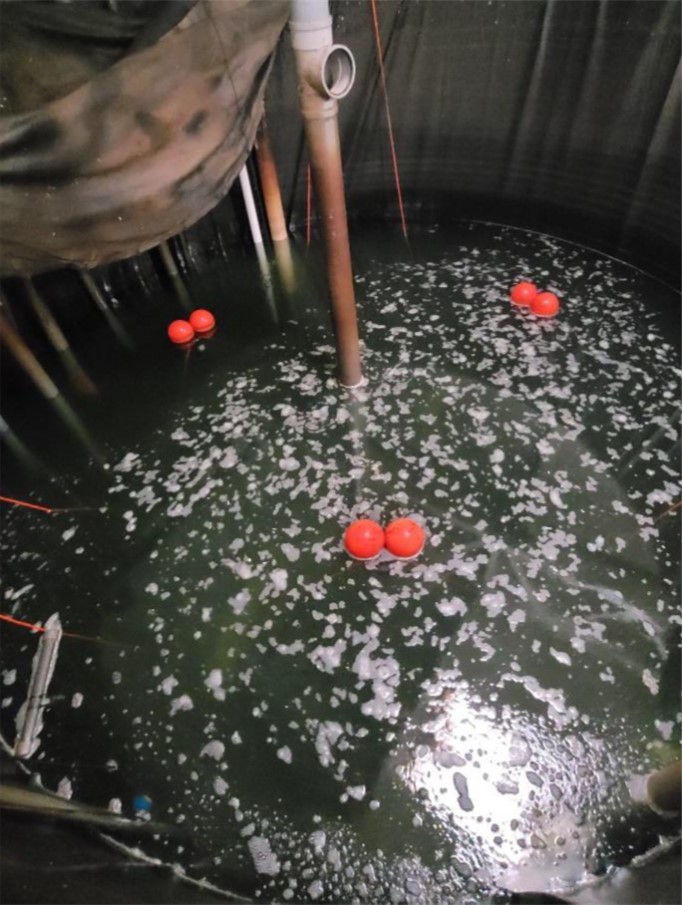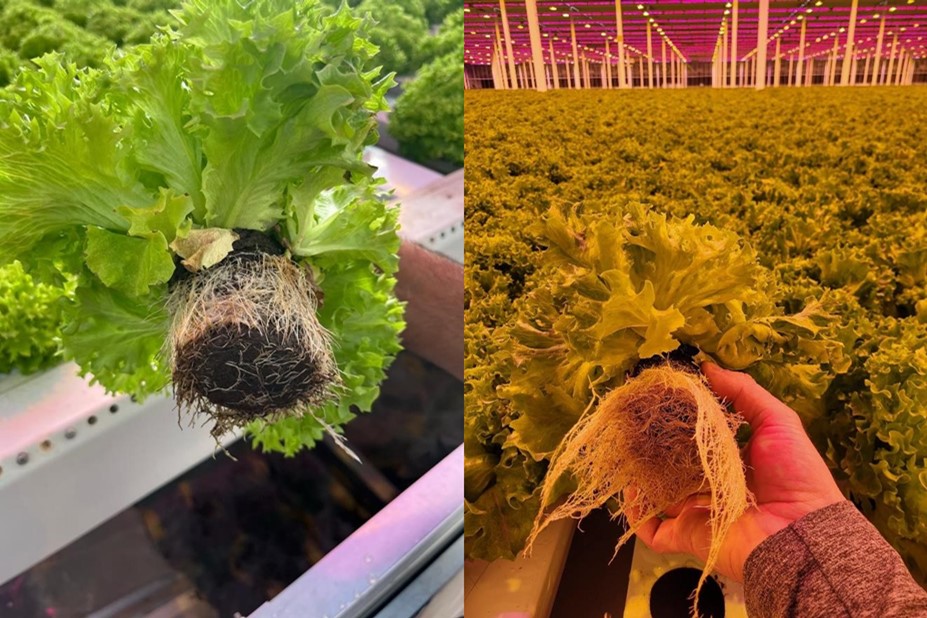
Case Study:
Enhanced Commercial Lettuce Production with Purifico Ozone
This case study showcases the transformative impact of Purifico Ozone systems on commercial lettuce production, offering substantial improvements in water quality, plant health, and overall yield.
Producer Type: Greenhouse
Irrigation System: NFT (Nutrient Film Technique) with 20’ gutters, recirculating water
Media: Peat pucks Crop Type: Lettuce
Reservoir Volume: 100,000 Liters (*5)
Reservoir Treatment: Purifico S160 Systems (*5)
Oxygen Supply: AirSep AS-D (*1)
Flow Rate: 400 GPM, continuous
Production Area: ~11 acres
Project Value: $600,000
Before

After

Before:

Previous Water Treatment:
- Oxygen nanobubbles, (180-200% dissolved oxygen (18-20 ppm), ORP: 300-350 mV
- Ultrasonic Disinfection
- Beneficial Microbes
- UV
- Hydrogen peroxide (H2O2)
Persistent Problems:
- High disease pressure
- Root growth impeded
- Foliar symptoms Leading to heavy losses due to unsatisfactory crop quality
- Slow growth rate
- Inconsistent production leading to loss of customers
- Pathogens: Olpidium, Pythium, Phytophthora, Fusarium not effectively controlled
- Low Water Quality
- High Turbidity
- High TOC
- Harmful levels of chemical disinfectants
After:

After Purifico Ozone Installation:
- Water Treatment:
- Purifico S-160 Ozone System
- Dissolved oxygen: 350-400% (35-40 ppm)
- ORP: 400-800 mV o Other water treatment systems removed (Nanno-bubbles, Ultrasonic, H2O2, biologicals)
- Improvements:
- Drastically reduced disease pressure
- Good health of roots and foliage → high crop quality
- Increased growth rate; Production increased by more than 300%
- Consistent production lead to customer retention
- Pathogens: Olpidium, Pythium, Phytophthora, Fusarium effectively controlled; i.e. 100-10,000 -fold reductions measured by qPCR
- High Water Quality
- Low Turbidity
- Low TOC
- No harmful residues
- Drastically reduced disease pressure
- Purifico S-160 Ozone System
Comparing Disinfectants
Ozone leads the way in defending against water-borne pathogens like bacteria, fungi, and viruses. Pound-for-pound, ozone outperforms other chemicals due to its strong oxidizing power. Plus, it leaves no toxic residues, allowing operators to use whatever amount is needed to get the job done. With other chemicals, toxic residues are produced which constrains dosage, allowing certain pathogens to evade destruction. When it comes to safeguarding your crops or livestock from water-borne pathogens, Purifico ozone products provide unparalleled protection and peace of mind.
The table below compares common water treatment systems and provides the CT values needed with each method to eliminate benchmark microorganisms. The dosages needed for disinfection vary with different temperatures, but ozone remains the best disinfectant in all conditions.
The CT values are listed in mg*min/L for treatment at 20°C. UV dosage is provided for reference. Since UV cannot disinfect systemically like chemicals can, it provides relatively poor disinfection on its own.
(Source: U.S. EPA (1991) Guidance Manual for Compliance with the Filtration and Disinfection Required for Public Water Systems Using Surface Water Sources, U.S. Environmental Protection Agency, Washington, D.C.)
Oxidative Power
Oxidation Potential is measured in volts (V) mand measures the tendency for a chemical species to gain electrons. as shown below, Ozone is a more powerful oxidant than other disinfectants like peroxide, chlorine or chlorine dioxide.
Incomplete Disinfection
Chlorine Dioxide
Chlorine dioxide (ClO2) is a popular disinfectant used to treat agricultural water. Chlorine dioxide is a fairly good option overall, but pathogen removal is likely to be incomplete for certain organisms such as fusarium or for removal of plant viruses . This method also leads to the build-up of chloride in irrigation water which can be harmful to plants and impede water recycling.
Residuals and Limited Recycling
Electrolyzed Water
Electrolyzed water is a system that aims to produce hypochlorous acid (HOCl), which is an oxidizer and sanitizer. The hypochlorous acid is produced through the electrolysis of salt (NaCl) or hydrochloric acid (HCl). Hypochlorous acid is useful for disinfecting water, but has some disadvantages compared with ozone:
- Na or Cl residuals
- Limits how many times water can be recycled
- Doesn’t eliminate all plant pathogens
- High upfront cost for generators
- Like ozone, it is unstable and needs to be produced on-site. Generators and other equipment are required for its use.
Not Stand-Alone
Ultraviolet (UV) Radiation
Many producers recirculate their clean water through UV irradiation to kill microbes in solution. Since UV light is only able to kill microbes where it makes contact with them, this does not offer protection from microbial growth on the surface of your tanks and plumbing. UV radiation is a good way of reducing the microbial load circulating in solution, but is not the best choice as a stand-alone solution because it isn’t effective against all pathogens and will not completely eradicate them.
Free Chlorine
Studies have found that the amount of free chlorine levels needed to inactivate plant pathogens such as F.oxysporum is higher than phytotoxic thresholds. In other words, certain pathogens can’t be eliminated because the amount of disinfectant needed would be toxic to crops. In contrast, research shows that achievable working concentrations of ozone (~1.5ppm) yield 100% inactivation of F.oxysporum spores in less than a minute. Our personal experience backs up this science; after installation of Purifico ozone systems, our customers see drastic reductions in microbial counts on their water quality reports (typically complete elimination of detectable microbes).
